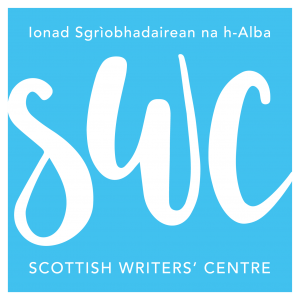Kicking off the Scottish Writers’ Centre’s anniversary year was the author Tom Hubbard discussing his book Slavonic Dances, which contains novellas about Scottish characters coming into contact with Central and Eastern European cultures. He then went on to discuss seven poems he had translated into Scots from the languages of these regions, such as Russian, Hungarian, Latvian and Polish. The night was an infusion of Scottish culture with Central and Eastern European cultures.

When asked by an audience member about his interest in Central and Eastern European countries and cultures, Tom discussed how his fascination had originally stemmed from his love of Russian music and Russian short stories, which offered something different and new from his university course’s reading list. Tom stated that his desire to bring together the Russian culture, and other cultures from nearby countries, with his
own Scottish culture began from an interest in ‘the way diverse cultures come together but also don’t come together’.
Tom’s novellas address both the marriage and clash of different cultures. The first novella in Slavonic Dances, ‘Mrs Makarowski’, centres on a relationship between a woman from Fife and a Polish soldier. His second novella ‘The Kilt’, similarly tells of a romance between a visiting Scottish student to Czechoslovakia and a native Czech student set during the Prague Spring, and the third novella, ‘The Carrying Stream’, focuses on a Glaswegian poet’s love of Russian music. In this book, Slavonic Dances, each
novella also has a corresponding drawing and at the back there is a glossary of Scots.
Following on from his discussion of his book, Tom performed his Scots translation of the Czech poem ‘Frogs sat a round a puddle’ by Jan Neruda, which featured some half-human, half-froglike-creature sculptures created by Tom himself. He then went on to talk about and perform six more poems he had converted into Scots, with the help of translators, from such languages as Russian, Hungarian, Latvian and Polish, to form a collection that he called ‘A virtual poetry tour of Europe’. The poems shared the common thread of being ballads or folk tales from their native countries. Many of the poets whose work Tom elected to translate were translators themselves of English language or Scots poetry into their native tongue. For example, Tom takes the Latvian poet Lajos
Áprily’s poem ‘Northern Roses’ and translates it into Scots because, as Tom himself stated ‘The poet [Áprily] translated Burns, it would be nice to translate him’. Tom is doing for Scottish culture what these poets have managed for their own culture: broadening its poetic and artistic horizons by introducing other cultures into the mix.

Tom’s work not only brings different cultures together, but also brings different artistic styles together, be it prose and charcoal sketches in his book, or poetry and sculpting in his performances or literature and linguistics in his works overall. In this combination of cultures and art forms, a more dynamic, vivid artistic experience is created.
Words by Maeve O’Brien
Photos by Clare Patterson



